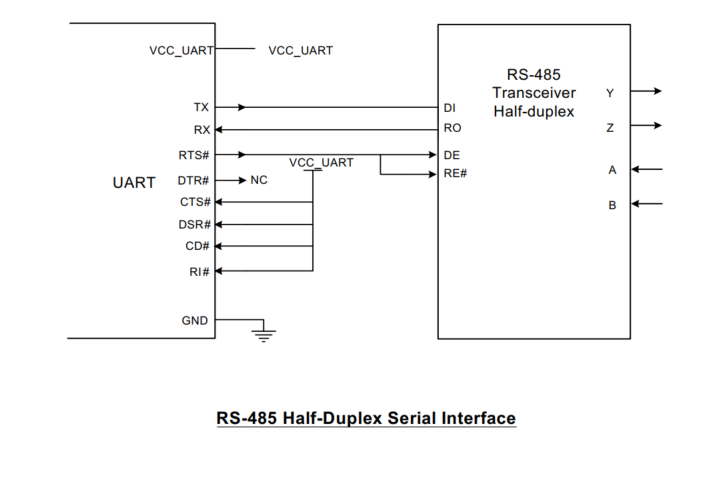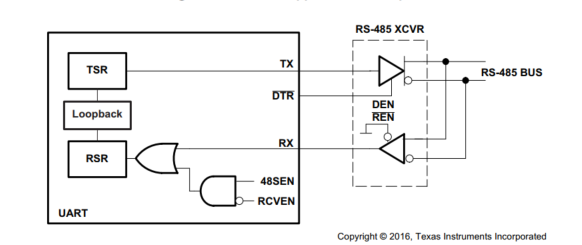Tool/software: TI C/C++ Compiler
Hello team,
I am using the TL16C752D on linux platform , and linux version is : 4.9.69
when I bootup , the log shows :
[ 5.520485] Serial: 8250/16550 driver, 16 ports, IRQ sharing disabled
[ 5.545997] serial8250.0: ttyS0 at MMIO 0x2000000 (irq = 29, base_baud = 921600) is a ST16654
[ 5.567223] serial8250.0: ttyS1 at MMIO 0x2000200 (irq = 29, base_baud = 921600) is a ST16654
[ 5.588253] serial8250.0: ttyS2 at MMIO 0x2001000 (irq = 29, base_baud = 921600) is a ST16654
[ 5.609272] serial8250.0: ttyS3 at MMIO 0x2001200 (irq = 29, base_baud = 921600) is a ST16654
[ 5.630233] serial8250.0: ttyS4 at MMIO 0x2008000 (irq = 29, base_baud = 921600) is a ST16654
[ 5.651215] serial8250.0: ttyS5 at MMIO 0x2008200 (irq = 29, base_baud = 921600) is a ST16654
[ 5.672172] serial8250.0: ttyS6 at MMIO 0x2009000 (irq = 29, base_baud = 921600) is a ST16654
[ 5.693139] serial8250.0: ttyS7 at MMIO 0x2009200 (irq = 29, base_baud = 921600) is a ST16654
[ 5.714107] serial8250.0: ttyS8 at MMIO 0x2010000 (irq = 29, base_baud = 921600) is a ST16654
[ 5.735072] serial8250.0: ttyS9 at MMIO 0x2010200 (irq = 29, base_baud = 921600) is a ST16654
[ 5.756019] serial8250.0: ttyS10 at MMIO 0x2011000 (irq = 29, base_baud = 921600) is a ST16654
[ 5.776980] serial8250.0: ttyS11 at MMIO 0x2011200 (irq = 29, base_baud = 921600) is a ST16654
[ 5.798003] serial8250.0: ttyS12 at MMIO 0x2018000 (irq = 29, base_baud = 921600) is a ST16654
[ 5.818956] serial8250.0: ttyS13 at MMIO 0x2018200 (irq = 29, base_baud = 921600) is a ST16654
[ 5.839918] serial8250.0: ttyS14 at MMIO 0x2019000 (irq = 29, base_baud = 921600) is a ST16654
[ 5.860868] serial8250.0: ttyS15 at MMIO 0x2019200 (irq = 29, base_baud = 921600) is a ST16654
I find the driver match the wrong chip : ST16654 , and it does not work,
and I can not find the type TL16C752D at linux-4.9.69\include\uapi\linux\serial_core.h
How can I add the support of TL16C752D to work ?





